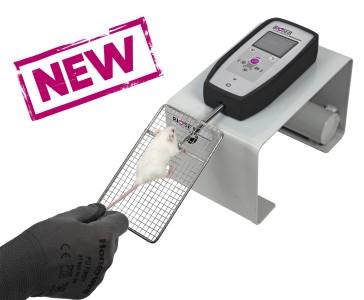Authors
C. Nozaki, A.M. Vergnano, D. Filliol, A.-M. Ouagazzal, A. Le Goff et al.
Lab
Institut de Génétique et Biologie Moléculaire et Cellulaire, Illkirch, France,
Journal
Nature Neurosciences
Abstract
Zinc is abundant in the central nervous system and regulates pain, but the underlying mechanisms are unknown. In vitro studies have shown that extracellular zinc modulates a plethora of signaling membrane proteins, including NMDA receptors containing the NR2A subunit, which display exquisite zinc sensitivity. We created NR2A-H128S knock-in mice to investigate whether Zn2+-NR2A interaction influences pain control. In these mice, high-affinity (nanomolar) zinc inhibition of NMDA currents was lost in the hippocampus and spinal cord. Knock-in mice showed hypersensitivity to radiant heat and capsaicin, and developed enhanced allodynia in inflammatory and neuropathic pain models. Furthermore, zinc-induced analgesia was completely abolished under both acute and chronic pain conditions. Our data establish that zinc is an endogenous modulator of excitatory neurotransmission in vivo and identify a new mechanism in pain processing that relies on NR2A NMDA receptors. The study also potentially provides a molecular basis for the pain-relieving effects of dietary zinc supplementation.
BIOSEB Instruments Used
Grip strength test (BIO-GS3)
Source :
http://www.nature.com/neuro/journal/v14/n8/full/nn.2844.html

 Douleur - Allodynie/Hyperalgésie Thermique
Douleur - Allodynie/Hyperalgésie Thermique Douleur - Spontanée - Déficit de Posture
Douleur - Spontanée - Déficit de Posture Douleur - Allodynie/Hyperalgésie Mécanique
Douleur - Allodynie/Hyperalgésie Mécanique Apprentissage/Mémoire - Attention - Addiction
Apprentissage/Mémoire - Attention - Addiction Physiologie & Recherche Respiratoire
Physiologie & Recherche Respiratoire




































 Douleur
Douleur Système Nerveux Central (SNC)
Système Nerveux Central (SNC)  Neurodégénérescence
Neurodégénérescence Système sensoriel
Système sensoriel Système moteur
Système moteur Troubles de l'humeur
Troubles de l'humeur Autres pathologies
Autres pathologies Système musculaire
Système musculaire Articulations
Articulations Métabolisme
Métabolisme Thématiques transversales
Thématiques transversales Congrès & Meetings
Congrès & Meetings 